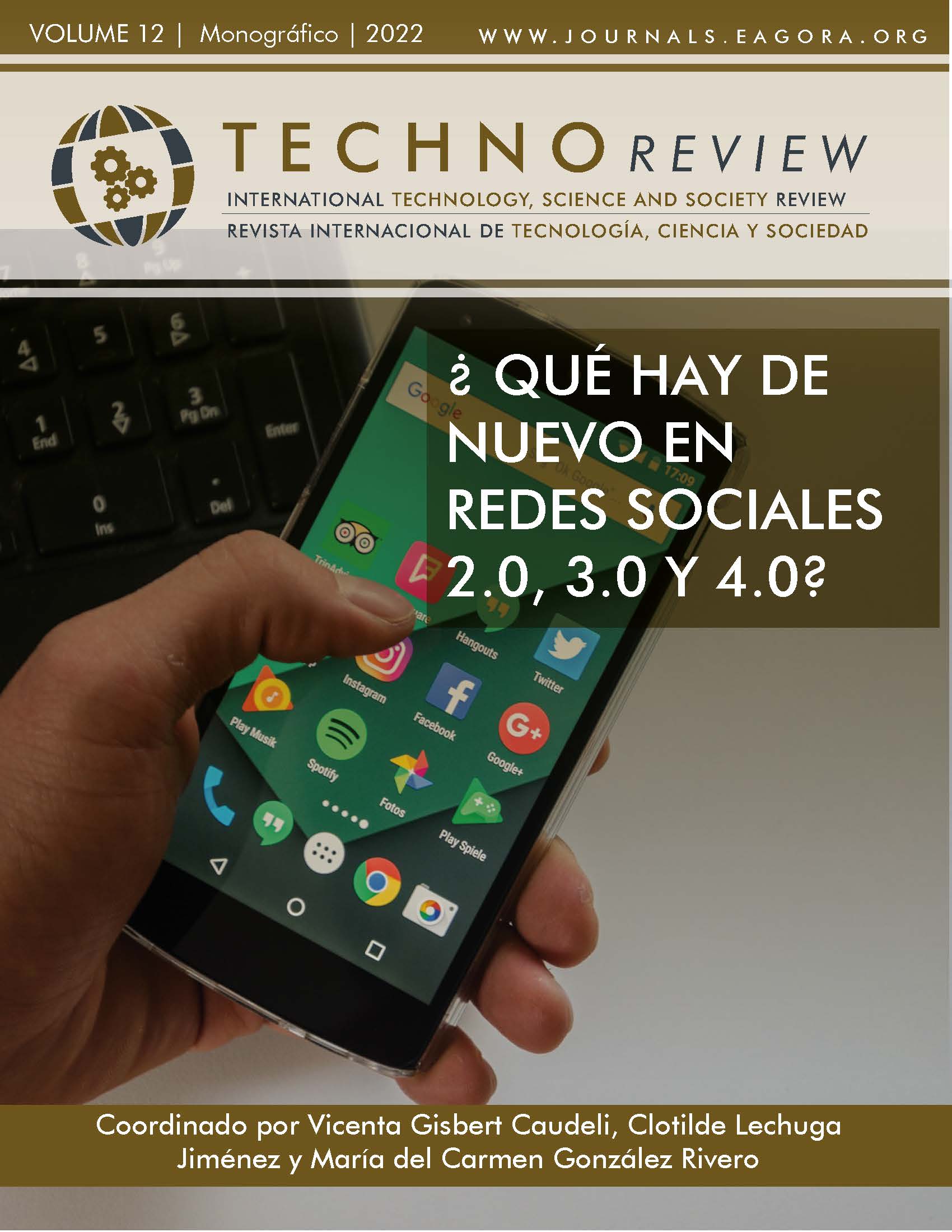Detection of suicide risk through social media
Pilot study
DOI:
https://doi.org/10.37467/revtechno.v11.4384Keywords:
Suicide, Social media, Twitter, Instagram, Suicide attemptAbstract
Suicide is a devastating problem, 800,000 people end their lives each year. Suicide prevention has become a primary objective, but now no sufficient preventive actions have been found. In this sense, social networks play an important role since some individuals have begun to publish their suicidal tendencies on them. The objective of this exploratory work is to verify whether a preventive tool based on artificial intelligence that uses messages from social networks is capable of detecting the real risk of a suicide attempt in patients who come to the hospital. In addition, the social networks will be qualitatively analyzed.
References
Alothman, D., & Fogarty, A. (2020). Global differences in geography, religion and other societal factors are associated with sex differences in mortality from suicide: An ecological study of 182 countries. Journal of Affective Disorders; vol. 260, p. 67-72.
Arilla-Andres, S. (2021). Detección del riesgo de suicidio a través de las redes sociales: estudio piloto. Trabajo Final de Máster, Universidad de Zaragoza.
Beck, A. T., Schuyler, D., & Herman, I. (1974). Development of suicidal intent scales. The prediction of suicide. Charles Press Publishers.; 45-56.
Brown, G., Jeglic, E., Henriques, G., & Beck, A. (2008). Terapia cognitiva, cognición y comportamiento suicida.
Cognición y suicidio. Teoría, investigación y terapia. México: manual moderno.
Canon-Buitrago, S.C. y Carmona-Parra J.A. (2018). Ideación y conductas suicidas en adolescentes y jóvenes. Rev Pediatr Aten Primaria; vol.20, n.80, p. 387-397.
Clement J. Social media - statistics and facts. Statista. URL: https://www.statista.com/topics/1164/social- networks/
Coppersmith, G., Ngo, K., Leary, R., & Wood, A. (2016). Exploratory Analysis of Social Media Prior to a Suicide Attempt. Association for Computational Linguistics. 106–117.
Corona-Miranda, B.; Hernandez-Sanchez, M. y Garcia-Perez, R.M. (2016). Mortalidad por suicidio, factores de riesgos y protectores. Revista habanera de ciencias médicas; vol.15, n.1. p. 92-97
De Choudhury, M., Kiciman, E., Dredze, M., Coppersmith, G., & Kumar, M. (2016). Discovering shifts to suicidal ideation from mental health content in social media. Conference on Human Factors in Computing Systems-Proceedings; 2098–2110.
Espandian, A., Gonzalez, M., y Reijas, T. (2020). Factores predictores de riesgo de repetición de intento de suicidio en una muestra de pacientes ambulatorios. Revista de Psiquiatria y Salud Mental; Vol.13. Núm. 1p. 16-17.
Fabra, J.,y Pérez-Yus, C. (2020). Detecting Suicide Risk Through Twitter. ADVCOMP 2020: The Fourteenth International Conference on Advanced Engineering Computing and Applications in Sciences.
Gómez, J. M. (2015). Language Technologies for Suicide Prevention in Social Media, Association for Computational Linguistics; 21–29.
Goñi-Sarriés, A., Zandio-Zorrilla, M. (2017). El suicidio: un reto para la prevención. Anales Sis San Navarra. p. 336. Harmer, B., Lee, S., Duong, T.V.H. & Saadabadi, A. Suicidal Ideation. (2020). In: StatPearls. Treasure Island (FL). PMID: 33351435.
Hawton, K., Hill, N., Gould, M., John, A., Lascelles, K., & Robinson, J. (2019). Clustering of suicides in children and adolescents. Lancet Child Adolesc Health; p 1-2.
Huang, X., Xing, L., Brubaker, J. R., & Paul, M. J. (2017). Exploring Timelines of Confirmed Suicide Incidents Through Social Media. Proceedings - 2017 IEEE International Conference on Healthcare Informatics. 470–477.
Instituto Nacional de Estadística (2020). Población que usa Internet. https://www.ine.es/ss/Satellite?L=es_ ES&c=INESeccion_C&cid=1259925528782&p=1254735110672&pagename=Produc- tosYServicios%2FPYSLayout
Jashinsky, J., Burton, S.H., Hanson, C.L.,West, J., Giraud-Carrier, C., Barnes, M.D., & Argyle, T. (2013). Tracking suicide risk factors through Twitter in the US. Crisis; 35, 51–59.
Joiner, T. E., Jr., Van Orden, K. A., Witte, T. K., Selby, E. A., Ribeiro, J. D., Lewis, R., & Rudd, M. D. (2009): Main predictions of the interpersonal–psychological theory of suicidal behavior: Empirical tests in two samples of young adults. Journal of Abnormal Psychology. 118(3), 634–646.
Lopez-Castroman, J., Moulahi, B., y Azé, J. (2020). Mining social networks to improve suicide prevention: A scoping review. J Neurosci Res; 98: 616– 625.
Luxton, D. D., June, J. D., & Fairall, J. M. (2012). Social media and suicide: a public health perspective. American Journal of Public Health; 102(S2).
Marks, M. (2019). Artificial intelligence based suicide prediction. Yale Journal of Law and Thecnology; 98, 2019, 107-109.
Martín Critikián, D. y Medina Núñez, M. (2021). Redes sociales y la adicción al like de la generación z. Revista de Comunicación Y Salud, 11, 55-76. https://doi.org/10.35669/rcys.2021.11.e281
Molina, L.I.I., Mora M.G.R, & Carvajal, H.A. (2020). Factores de riesgo asociados a la conducta suicida en el adulto mayor. Medicentro;24(1): p.54-67.
O’Dea, B., Larsen, M.E., Batterham, P.J., Calear, A.L., & Christensen, H. A. (2017). Linguistic Analysis of Suicide- Related Twitter Posts. Crisis;38(5):319-329.
Parrott, S., Britt, B.C., Hayes, J.L, & Albright D.L. (2020). Social Media and Suicide: A Validation of Terms to Help Identify Suicide-related Social Media Posts. Journal of Evidence-Based Social Work; 17:5, 624-634.
Pourmand, A., Roberson, J., Caggiula, A., Monsalve, N., Rahimi, M., & Torres-Llenza, V. (2019). Social Media and Suicide: A Review of Technology-Based Epidemiology and Risk Assessment. Telemedicine and E-Health; 25(10), 880–888.
Robinson, J. (2016). Social media and suicide prevention: A systematic review. Early Intervention in Psychiatry; 10(2), 103–121.
Rubio, G., Montero, I., Jauregui, J., Villanueva, R., Marin, J. J. & Santodomingo, J. (1998). Validación de la escala de riesgo suicida de Plutchik en población española. Arch. Neurobiol..; 61, 143-152.
Seidlitz, L., Conwell, Y., Duberstein, P., Cox, C., & Denning, D. (2001). Emotion traits in older suicide attempters and non-attempters. Journal of Affective Disorders; 66(2–3), 123–131.
Tankovska, H. Social media - Statistics & Facts- Statista. (2021). Retrieved June 21, 2021, from https://www. statista.com/topics/1164/social-networks/
Twitter Internal Data (BizInsights) (2021). Age predicted based on statistical modeling. Tweets from May 1st, 2020 - May 1st, 2021. US Only, Gen-Z Users.
World Health Organization, (WHO), (2017). Global Health Observatory Data Repository. URL: https://apps.who. int/gho/data/node.main
World Health Organization (WHO). (2014). Preventing suicide: a global imperative. ISBN 978-92-4-156477-9.
Washington, DC. p. 70-73.
Downloads
Published
Issue
Section
License
All articles are published under an Attribution-NoDerivatives 4.0 International (CC BY-ND 4.0) license. Authors retain copyright over their work.

